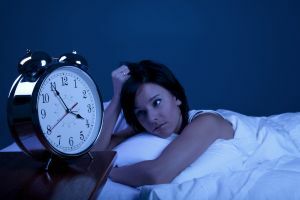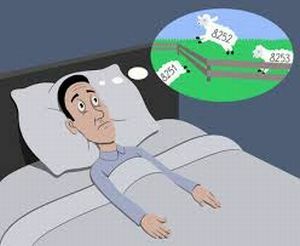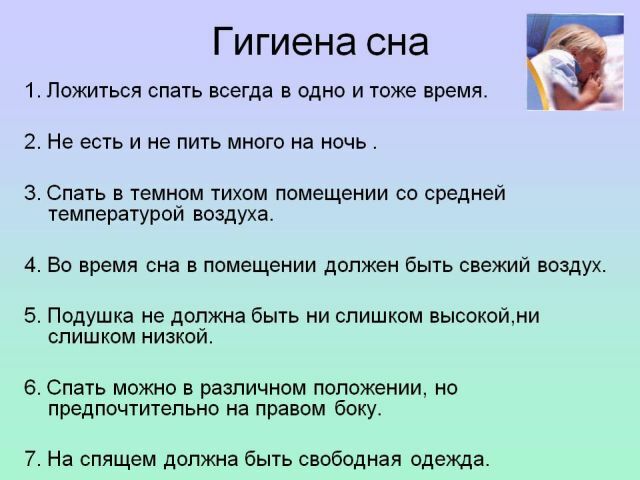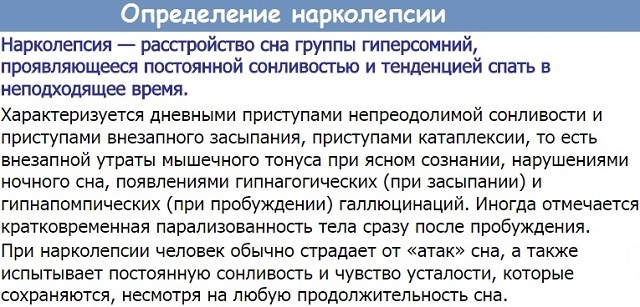 Every person has experienced this feeling for himself at least once: it's night in the yard, but I can not fall asleep in any way.
Every person has experienced this feeling for himself at least once: it's night in the yard, but I can not fall asleep in any way.
One of the sleep disorders is called insomnia( or people's insomnia).
Although any sleep disturbance is called insomnia - this definition is not entirely true. Rather, the term "baby" is suitable, since it is extremely difficult to reach the state of prolonged absence of sleep. Hence, almost no one suffers from insomnia, and especially not sick. What then is insomnia?
Contents
- Understand
- Varieties of violation
- Causes of the disease
- Symptoms and complaints of patients
- Diagnosis is a complicated task
- How to get rid of sleep problems?
- Prognosis and prevention of the disease
Understand in terms of
Insomnia is a clinical condition in which sleep and wakefulness is disturbed. At the same time, sleep for these patients is often enough, but they use it for other purposes.
Statistically, about 25% to 50% of the total population of the world suffers from a sleep disorder. As with age physiological health gradually worsens - symptoms are more often observed in people of advanced years.
Varieties of violation
Depending on the symptoms, three forms of the disease are distinguished:
- is a presumptive form of , which is characterized by difficulties in falling asleep;
- intrasomnicheskaya - problems during sleep( frequent spills, insufficient depth of sleep and the like);
- is a postmodern form of , which prevents vigorous awakening.
Insomnia is quite an insidious disease, which can be classified according to other signs. 
Depending on the severity of symptoms and their frequency, distinguish insomnia of mild, moderate and severe. An easy degree is characteristic of single or rare cases of symptoms. A severe degree brings inconvenience almost every night and significantly reduces the quality of a person's life. Moderate manifestations of symptoms are typical for moderate severity.
By the time of manifestations the disease is divided into:
- transient ( with a duration of two or three nights);
- short-term ( up to two weeks);
- chronic ( from several weeks to months).
Some scientists subdivide short-term insomnia into acute and adaptive. In both cases, the patient knows what the symptoms were caused by. The first, most often, is caused by the presence of psychoemotional arousal or heavy physical labor.
Adaptive insomnia manifests itself as a protective reaction of the body to changes in the time zone, climatic conditions, etc.
The primary and secondary( repeated) insomnia is distinguished by the frequency of symptoms.
Causes of the disease
One of the most common causes of the onset of symptoms of a disorder is non-compliance with sleep hygiene. Among the main factors contributing to this, the following are distinguished:
- noise;
- light or light room;
- excessive alcohol consumption, which makes sleep superficial;
- abundant eating at night;
- taking certain medications;
- falling asleep and waking up at different times.
 Another reason for the difficulties with night rest is a violation of sleep and wakefulness. This may be due to the shift work schedule, for example, daily shifts of doctors or sitting at the textbooks during the session.
Another reason for the difficulties with night rest is a violation of sleep and wakefulness. This may be due to the shift work schedule, for example, daily shifts of doctors or sitting at the textbooks during the session.
The next reason is called psychophysiological. Now life without stress is impossible to imagine. Each person copes with it in his own way. If, on the other hand, everything is left to its own devices, excessive irritability by the evening will lead to a concentration in the blood of the hormone cortisol.
A cortisol accumulates by morning( which causes awakening) and decreases by the evening( falling asleep).If the opposite happens, then it will be almost impossible to fall asleep.
Do not forget about the concomitant diseases. There are more than 80 diseases that are manifested in a dream. Among them, restless legs syndrome( muscle tension before falling asleep), apnea syndrome( short-term cessation of breathing), enuresis( incontinence) and others.
Symptoms and complaints of patients
The most common problems with sleeping experience people over 50 years. The main symptoms and complaints can be combined into such groups: 
- difficulty falling asleep;
- spontaneous awakening at night and the inability to fall asleep again;
- difficult waking up in the morning;
- lack of feeling of vivacity and lightness after awakening.
These symptoms can occur both together and alternately. It should be noted that the duration of sleep in this case is of secondary importance. A person can sleep for 5-6 hours without experiencing any problems, and can sleep 12 and constantly feel drowsy and tired.
Diagnosis is a complex task
When assessing the problem of sleep disturbance, it is important to remember that they can be caused by the psychology and behavior of a person, or by life circumstances.
Diagnostic period passes in several stages:
- Medical examination of , which includes the collection of certain information: the period of going to bed, the beginning and progression of
 symptoms, patient complaints, lighting and temperature in the bedroom, diet and so on.
symptoms, patient complaints, lighting and temperature in the bedroom, diet and so on. - Psychosocial examination of reveals possible psychological problems of the onset of the disease.
- General inspection of .Determination of the presence or absence of diseases that can provoke a sleep disorder.
- Polysomnography is a study in which sleep phases, as well as the functioning of the body during a rest period, are registered with a special device and draw conclusions based on the findings.
- Observation or diary keeping by the patient , which subsequently allows the construction of cognitive-behavioral therapy.
How to get rid of sleep problems?
Depending on the factors of occurrence, the treatment of insomnia is divided into two groups: behavioral therapy and pharmacological intervention.
Behavioral therapy includes such components:
- Sleep Hygiene .This is a special program of communication habits and the period of falling asleep. Among the basic - use the bed on a direct
 appointment. Do not eat, drink, read or even work in bed;go to bed only when there is a feeling of drowsiness;reduce the use of stimulant drugs, such as coffee, strong tea, chocolate;light meal for dinner;to exclude bright light, including from the TV screen, the phone one hour before sleep;maintain favorable conditions in the bedroom - optimal temperature, cleanliness, fresh air, muffled light, no irritants, etc.
appointment. Do not eat, drink, read or even work in bed;go to bed only when there is a feeling of drowsiness;reduce the use of stimulant drugs, such as coffee, strong tea, chocolate;light meal for dinner;to exclude bright light, including from the TV screen, the phone one hour before sleep;maintain favorable conditions in the bedroom - optimal temperature, cleanliness, fresh air, muffled light, no irritants, etc. - relaxation and breathing techniques aimed at the gradual relaxation of muscles and the preparation of the body for sleep.
- Psychotherapy , which helps a person to understand the true causes of the symptoms and cope with the disease.
- Sleep restriction of if the patient sleeps too much and is ineffective. Reducing the number of hours for sleep will lead to rapid falling asleep and full rest for a short period.
- Therapy used in the inadequate sleep perception , when a person is afraid to fall asleep, for far-fetched reasons, and also when the subject feels that he is practically not sleeping, while studies indicate the opposite.
- Control of stimuli, which is closely related to sleep hygiene .If you can not fall asleep - you need to get out of bed and do something useful, and as soon as you get sleepy - go back to bed. To control the time of awakening and going to sleep. Reduce the time of wakefulness in bed so that it is not associated with sleep problems.

Pharmacological treatment is the use of a number of drugs:
- Antidepressants , if the patient feels irritable and general depression, which leads to sleep disturbance.
- Hypnotic receptor agonists and benzodiazepines .This includes tranquilizers and potent sleeping pills.
- Preparations based on valerian , with minor disturbances.
- Melatonin receptor agonists stimulate the production of the sleep hormone melatonin and inhibit the production of cortisol.
Prognosis and prevention of
 In most cases, the prognosis is favorable and does not force the use of tranquilizers and sleeping pills.
In most cases, the prognosis is favorable and does not force the use of tranquilizers and sleeping pills.
Only in the case of chronic insomnia will require long-term assistance and support from doctors. But it is possible to cure completely with any variant.
Prophylaxis consists of regular examination with a doctor( for the detection of possible diseases), metered exercise, observance of hygiene of sleep and proper nutrition and minimization of stressful situations.



